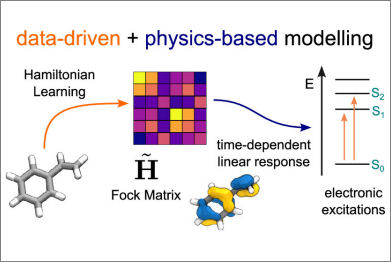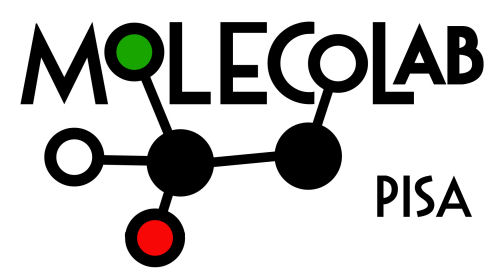
Data-driven techniques are increasingly used to replace electronic-structure calculations of matter. In this context, a relevant question is whether machine learning (ML) should be applied directly to predict the desired properties or combined explicitly with physically grounded operations. We present an example of an integrated modeling approach in which a symmetry-adapted ML model of an effective Hamiltonian is trained to reproduce electronic excitations from a quantum-mechanical calculation. The resulting model can make predictions for molecules that are much larger and more complex than those on which it is trained and allows for dramatic computational savings by indirectly targeting the outputs of well-converged calculations while using a parametrization corresponding to a minimal atom-centered basis. These results emphasize the merits of intertwining data-driven techniques with physical approximations, improving the transferability and interpretability of ML models without affecting their accuracy and computational efficiency and providing a blueprint for developing ML-augmented electronic-structure methods.
Cignoni, E.; Suman, D.; Nigam, J.; Cupellini, L.; Mennucci, B. & Ceriotti, M.
ACS Cent. Sci. (2024). https://pubs.acs.org/doi/full/10.1021/acscentsci.3c01480

